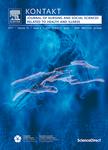版权所有:内蒙古大学图书馆 技术提供:维普资讯• 智图
内蒙古自治区呼和浩特市赛罕区大学西街235号 邮编: 010021

作者机构:Charles University Faculty of Physical Education and Sports Sport Research Centre Prague Czech Republic Institute for Clinical and Experimental Medicine Nephrology Department Prague Czech Republic
出 版 物:《Kontakt》 (Kontakt)
年 卷 期:2014年第16卷第4期
页 面:e249-e255页
学科分类:12[管理学] 1204[管理学-公共管理] 120402[管理学-社会医学与卫生事业管理(可授管理学、医学学位)] 1004[医学-公共卫生与预防医学(可授医学、理学学位)] 0101[哲学-哲学] 1001[医学-基础医学(可授医学、理学学位)] 1011[医学-护理学(可授医学、理学学位)] 0712[理学-科学技术史(分学科,可授理学、工学、农学、医学学位)] 10[医学]
基 金:Institute for Clinical and Experimental Medicine in Prague (IGA MZO NT 13139-3/2012)
主 题:Exercise intervention Nutrition Quality of life Renal transplantation
摘 要:The aim of the study was to define the positive effect of physical activity and nutrition on the health related quality of life in renal transplant patients in the first year following the surgery. Interestingly, the results showed that the quality of life evaluated by SF-36 of physically active renal transplant patients reached or even overreached the values of healthy individuals. We assessed the influence of intervention (physical activity, nutrition or both) on the health related quality of life. The health related quality of life was evaluated using standardized questionnaire KDQOL-SF™ (part of the generic questionnaire SF-36), and in the period one month before transplantation (patients filled the questionnaire retrospectively during their hospitalization in the first 14 days after the surgery) and approximately 10 months after the transplantation. There were 103 patients in this study (45 females, 58 males) of the age in the range 23-75 years with the average 54.7 years (±12 years). In the period when the patient was physically active or had special nutritive therapy (9.5 months after the renal transplantation) the quality of life evaluated using SF-36 (n = 94) statistically significantly improved in all domains except for physical activity (Wilcoxon test, p 0.05) that was lower than the values of healthy individuals in the Czech Republic. The results did not show any statistically significant difference among the items of the life quality and type of intervention done (ANOVA, p 0.05). Also the testing of the differences among particular types of intervention with regard to the evaluation of the quality of life did not show any statistically significant changes. There is a positive impact of physical activity on the quality of life of the renal transplant patients. It seems to be the most effective tool improving the quality of life, when physical activity is combined with nutrition therapy. © 2014 Faculty of Health and Social Studies of University of Sou